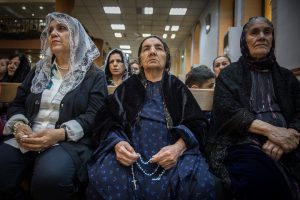West Bengal, a state nestled in the eastern part of India, is a melting pot of cultures, religions, and traditions. Amidst the rich tapestry of diversity, Christianity has woven its threads into the social fabric of the region, contributing to the pluralistic ethos that defines West Bengal. The history of Christianity in West Bengal is a narrative that spans centuries, marked by the interplay of faith, culture, and social dynamics.
The roots of Christianity in West Bengal can be traced back to the arrival of European colonizers in the 16th century. The Portuguese, Dutch, and British, as they established trade routes and colonies, brought with them missionaries who sought to propagate the Christian faith. The coastal areas of West Bengal became early centers of Christian influence, and over time, the Christian community began to take root.
One of the significant contributions to the Christian presence in West Bengal came with the arrival of the British East India Company. Kolkata, the capital of West Bengal, served as the headquarters of the British administration, and along with it came a substantial Christian population. The city, often referred to as the “City of Joy,” became a hub of Christian activities, with churches, schools, and hospitals becoming integral parts of the urban landscape.
The Christian community in West Bengal is diverse, comprising various denominations such as Roman Catholic, Protestant, Anglican, and Orthodox. Each denomination brings its unique traditions, rituals, and cultural influences, creating a mosaic of Christian expressions within the state. The St. Paul’s Cathedral in Kolkata, an iconic Anglican structure, stands as a testament to the historical and architectural significance of Christianity in the region.
Education and healthcare have been pivotal areas of Christian contributions in West Bengal. Missionary schools and colleges established by Christian denominations have played a crucial role in shaping the educational landscape of the state. Institutions like St. Xavier’s College and Loreto Convent have left an indelible mark on the academic history of West Bengal.
Moreover, Christian missionaries have been instrumental in the establishment of healthcare facilities, contributing significantly to medical services in the region. Hospitals such as St. John’s Medical College and Hospital have been at the forefront of providing healthcare to the people of West Bengal.
The Christian community in West Bengal actively participates in various social and charitable initiatives. Churches and Christian organizations engage in community development projects, upliftment of the underprivileged, and initiatives that promote social justice and harmony. The commitment to social service aligns with the teachings of Christianity, emphasizing compassion and love for one’s neighbor.
Despite the contributions and positive impact, Christians in West Bengal, like in other parts of India, have faced challenges and occasional instances of tension. However, the overarching narrative is one of coexistence and mutual respect among different religious communities.
In conclusion, Christianity in West Bengal is a dynamic and integral part of the state’s cultural and social mosaic. From the early days of European colonization to the present, the Christian community has not only contributed to the religious diversity of the region but has also played a significant role in education, healthcare, and social welfare. The story of Christianity in West Bengal is a testament to the enduring spirit of coexistence and pluralism that characterizes the state, fostering a rich and vibrant tapestry of faith and diversity.



Be First to Comment